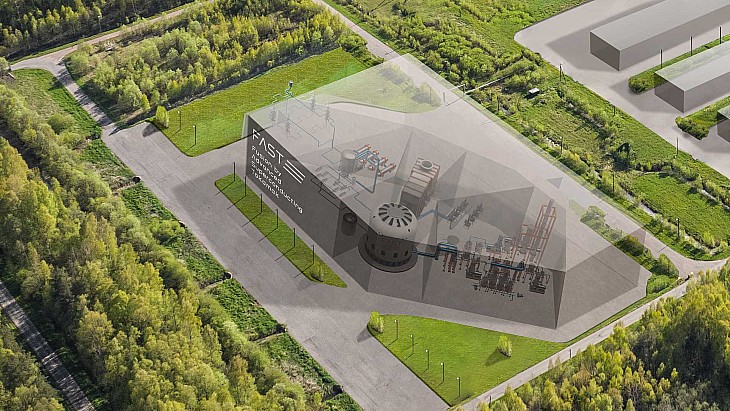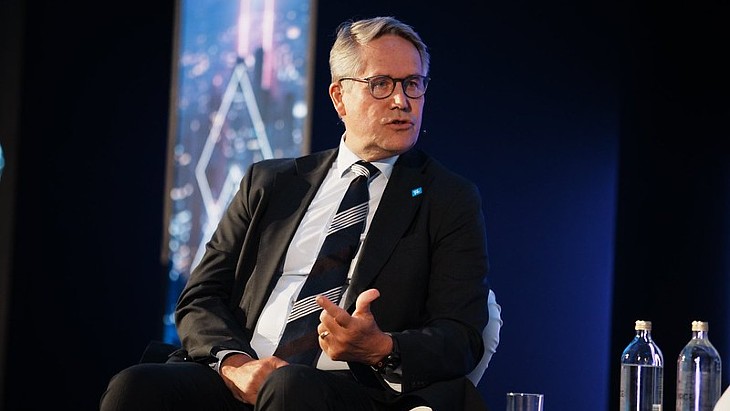State Power Investment Corporation (SPIC) said the first concrete was poured at 11.56am on 26 April. It expected to pour a total of about 6615 cubic metres of concrete over a 57-hour period.
The construction of the first two 1250 MWe CAP1000 reactors at the Lianjiang site was approved by China's State Council in September 2022. Excavation works for the units began in the same month, with the pouring of first concrete for the foundation of unit 1 completed at the end of September last year. Lianjiang unit 1 is expected to be completed and put into operation in 2028.
The CAP1000 reactor design - the Chinese version of the AP1000 - uses modular construction techniques, enabling large structural modules to be built at factories and then installed at the site.
.gif)
Concrete pouring for Lianjiang 2 (Image: SPIC)
Once all six CAP1000 units at the site are completed, the annual power generation will be about 70.2 TWh, which will reduce standard coal consumption by more than 20 million tonnes, and reduce carbon dioxide emissions by more than 52 million tonnes, sulphur dioxide by about 171,000 tonnes and nitrogen oxides by about 149,000 tonnes.
SPIC noted the Lianjiang project is the first nuclear power project it has developed and constructed in Guangdong province. It will also be the first nuclear power project in China to adopt seawater secondary circulation cooling technology, as well as the first to use a super-large cooling tower.
With a total installed nuclear power capacity of 8.09 GWe, SPIC is one of the three largest nuclear power investment, construction and operators in China. It has reactors in operation, four units under construction and a number of preliminary nuclear power project sites.

.jpg)



_16403_79272.jpg)


_69218.jpg)

_76087_55556.jpg)



